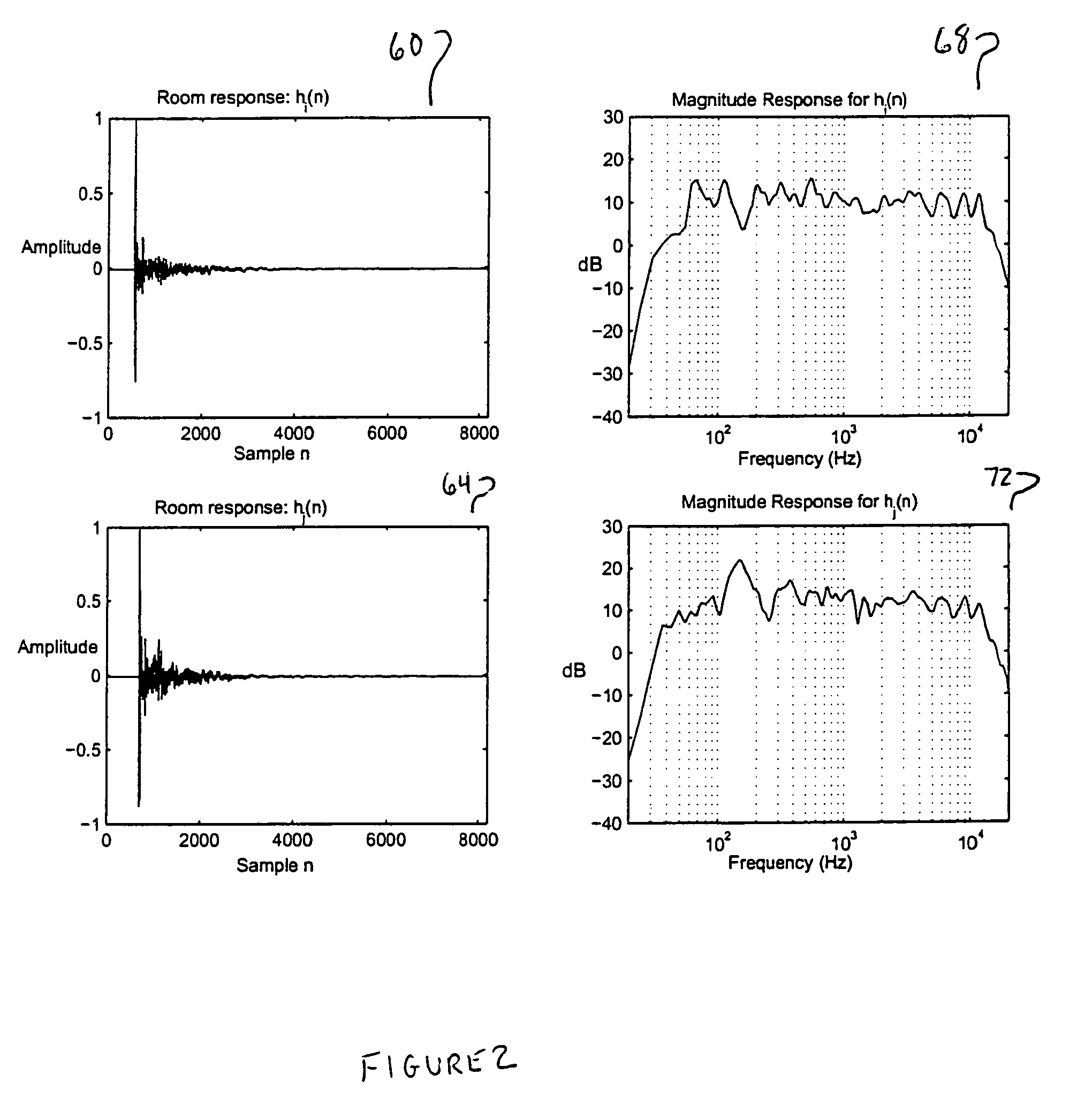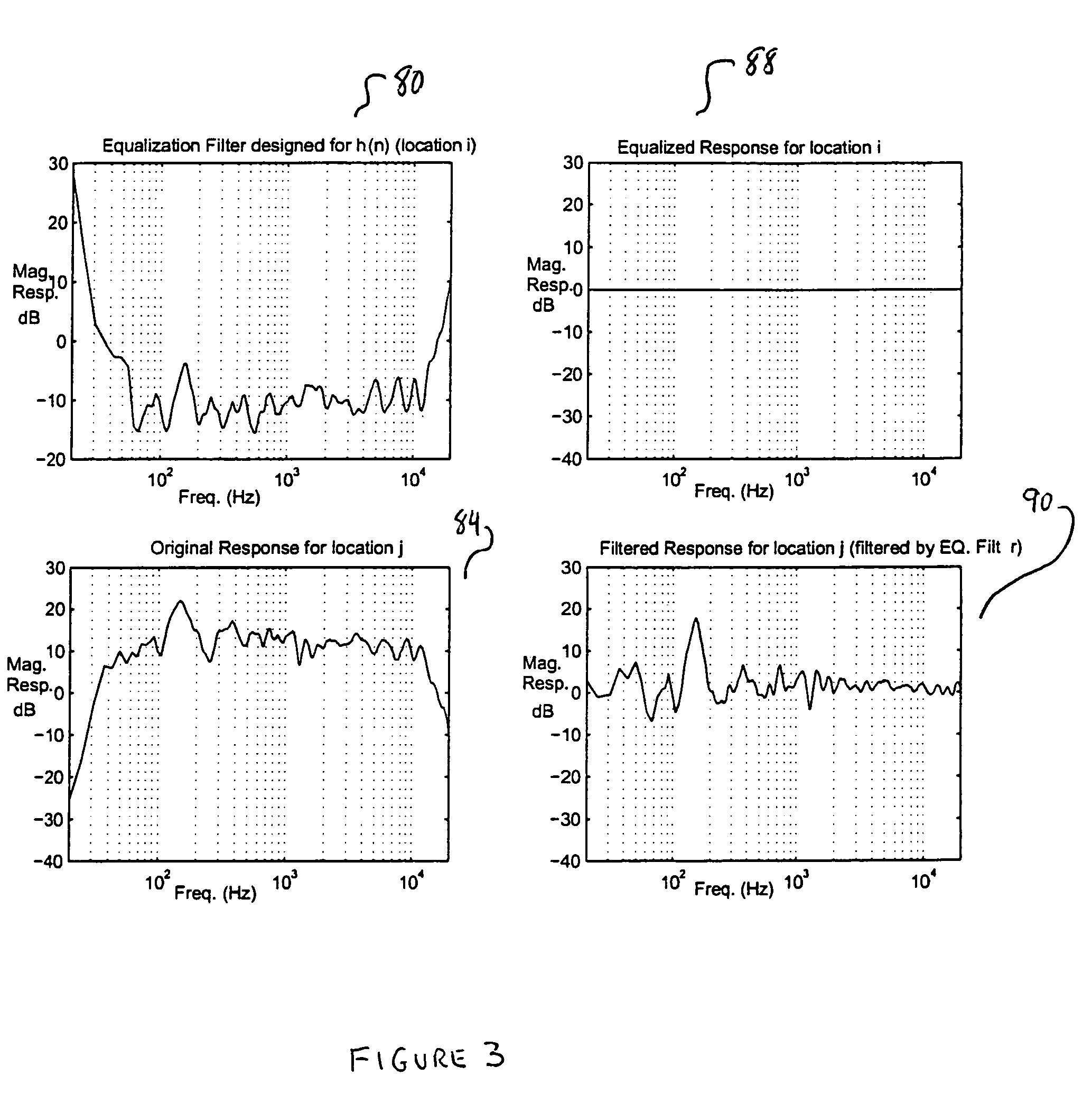System and method for automatic multiple listener room acoustic correction with low filter orders
a filter order and multi-listener technology, applied in the field of multi-channel audio, can solve the problems of affecting the equalization performance of the filter for a specific receiver (or listener), distorted frequency response of the audio signal at the receiving position, and poor equalization performance at other locations in the room
- Summary
- Abstract
- Description
- Claims
- Application Information
AI Technical Summary
Benefits of technology
Problems solved by technology
Method used
Image
Examples
Embodiment Construction
[0061]FIG. 1 shows the basics of sound propagation characteristics from a loudspeaker (shown as only one for ease in depiction) 20 to multiple listeners (shown to be six in an exemplary depiction) 22 in an environment 10. The direct path of the sound, which may be different for different listeners, is depicted as 24, 25, 26, 27, 28, 29, and 30 for listeners one through six. The reflected path of the sound, which again may be different for different listeners, is depicted as 31 and is shown only for one listener here (for ease in depiction).
[0062]The sound propagation characteristics may be described by the room acoustical impulse response, which is a compact representation of how sound propagates in an environment (or enclosure). Thus, the room acoustical response includes the direct path and the reflection path components of the sound field. The room acoustical response may be measured by a microphone at an expected listener position. This is done by, (i) transmitting a stimulus si...
PUM
 Login to View More
Login to View More Abstract
Description
Claims
Application Information
 Login to View More
Login to View More - R&D
- Intellectual Property
- Life Sciences
- Materials
- Tech Scout
- Unparalleled Data Quality
- Higher Quality Content
- 60% Fewer Hallucinations
Browse by: Latest US Patents, China's latest patents, Technical Efficacy Thesaurus, Application Domain, Technology Topic, Popular Technical Reports.
© 2025 PatSnap. All rights reserved.Legal|Privacy policy|Modern Slavery Act Transparency Statement|Sitemap|About US| Contact US: help@patsnap.com



